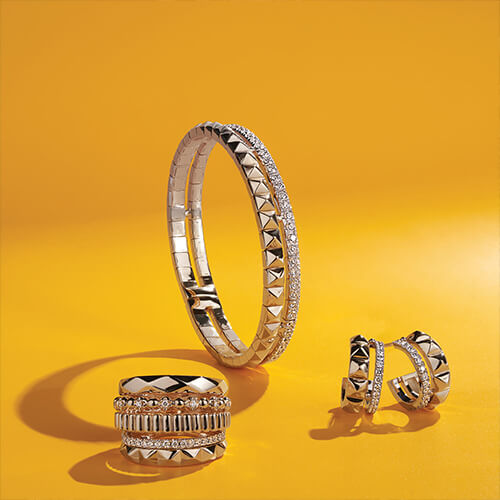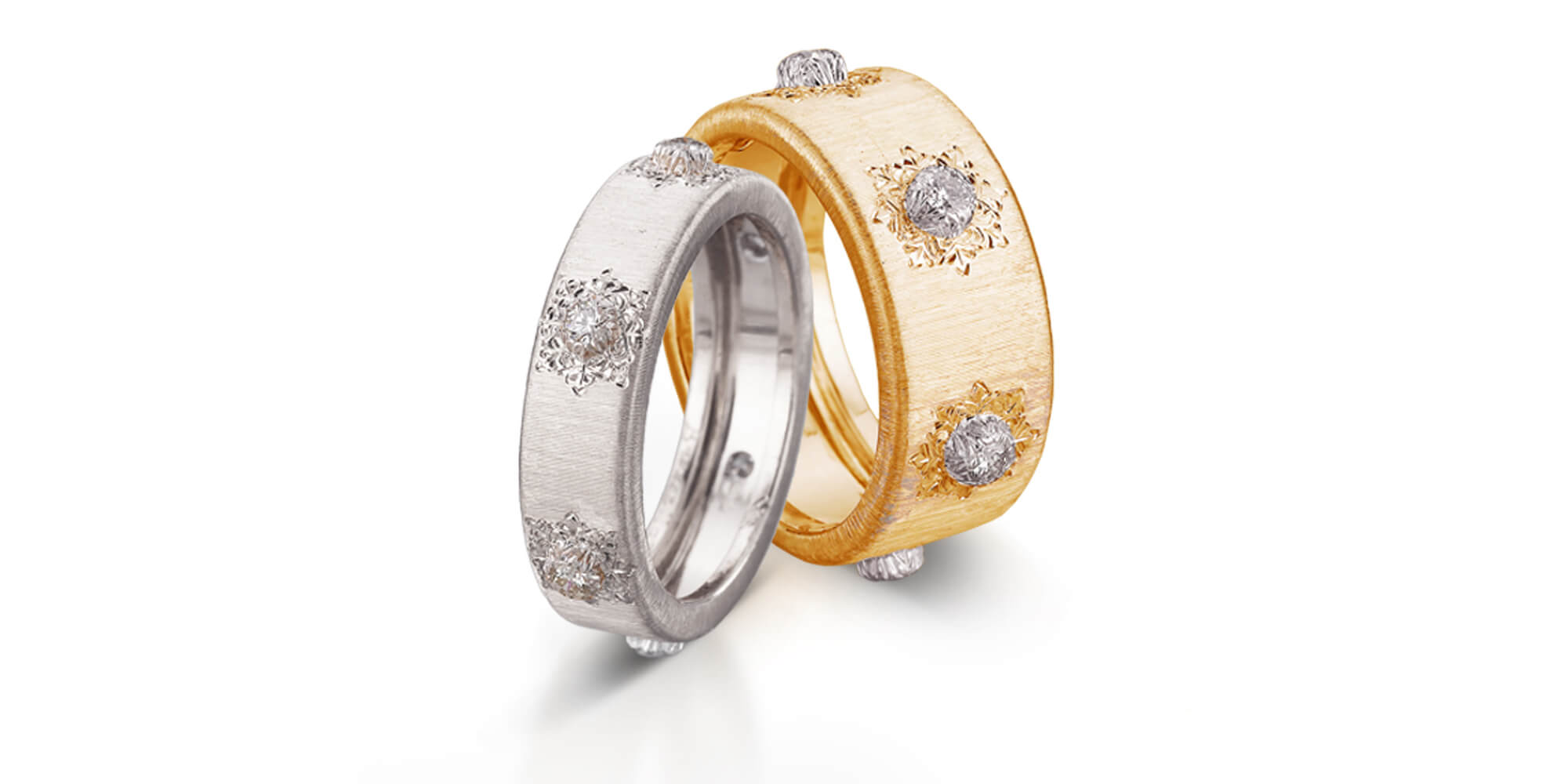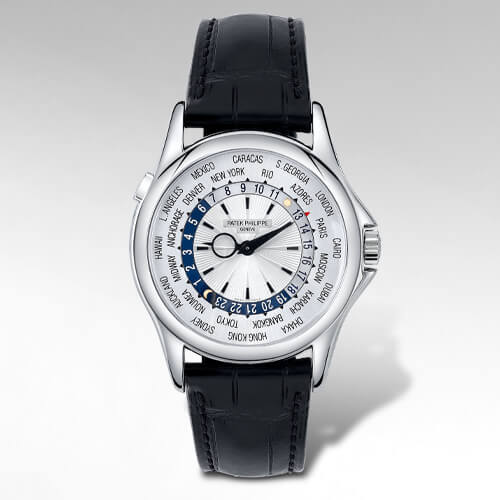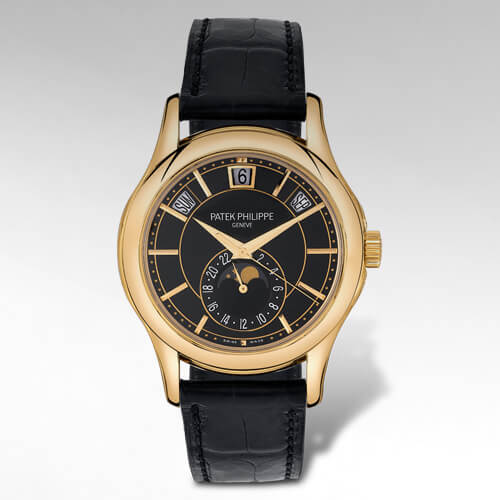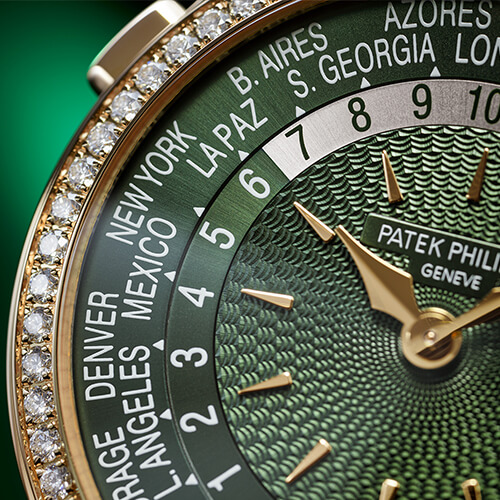Blog
Masters of Chime
Patek Philippe’s mastery of watchmaking’s most difficult complication – the Minute Repeater.
By Michael A. Fratangelo
In my first week with Patek Philippe, I was called into the workshop by David, our Customer Service Director at that time. He asked me what I could tell him about the wristwatch lying on the watchmaker’s bench. To my still-untrained eye, it had the obvious characteristics of a time-only Calatrava. As I leaned in closer, I could read “Tourbillon” stamped on the dial and thought to myself, “whatever that means?” (I would come to know the Tourbillon very shortly after by my Training Manager). Although I noticed a unique profile on the left side of the case, I quickly surrendered my analysis and called out “manual wind Calatrava with petite seconds display”. Not bad for my first week, I thought to myself – how far off could I be?
Without saying a word, the watchmaker activated that unique curve I had noticed by sliding it along the case and then observed my reaction. The workshop filled with a heavenly sound as if a miniature bell choir was neatly assembled inside the watch case. I was entranced.
The guilty party of this everlasting memory was Reference 3939J. This concept was entirely foreign to me, but I was instantly hooked! Peering through the sapphire crystal case back, I was in awe of the artistry of dressing up all of the componentry that performed this acoustic phenomenon. I needed to understand this function more deeply. I was ready to go to school!

I committed myself down the deepest rabbit hole necessary. Eventually, I emerged with a greater understanding of the mechanics, its history, our production methods at Patek Philippe, and perhaps the most emotional and sacred of all – our quality control protocol. But I also learned a real comeback story and how the experience I just had was on the brink of extinction forever.
To begin in the 17th century. This is where historians believe that someone first created a mechanism capable of triggering acoustic time signals on demand. When you consider how dark the entire world was in this era, this invention was quite the breakthrough – imagine no longer having to light a candle in the dark to read the time. Of course, in today’s world, we conveniently reference the time with a backlit screen. To think that in 1925, only half of all homes in the U.S. had electric power, these striking watches were an absolute delight for those that could afford them.

The first repeating system of this generation was clunky and in need of refinement as the world modernized. The most notable upgrade would occur at the end of the 18th century when Abraham-Louis Breguet engineered a brilliant solution that would become the standard. It involved taking curved steel circular rods, called “gongs,” and fitting them inside the case – without touching the case or movement. They are fixed at one end so they can receive strikes from two small solid components called “hammers.” The impact of the hammers on the gongs creates the sound. Thanks to Breguet, the chiming components required less space and fit into smaller cases (a major benefit to the future development of chiming wristwatches) – and it allowed sound to carry better. The world now had its blueprint for a more effective repeating system.
While Breguet dedicated his energy to designing a smaller acoustic package, many other watchmakers were focusing on the accuracy of striking time from quarter-hours – down to the minute. To do this, the watch needs to strike three distinct sounds:
- A low tone for each hour (from one to twelve strikes)
- A double high-low tone for each quarter-hour
- A high tone for each minute
The maximum number of strikes corresponds to the 32 strikes at 12:59:
- 12 hours = 12 strikes
- 3 quarters = 6 strikes
- 14 minutes = 14 strikes
For example, at 10:52 a.m., the watch will strike: 10 hours, 3 quarters, 7 minutes.
All of this development occurred before the first watches rang out within the workshop of Patek Philippe. Yes, the initial discovery of repeating timekeepers precedes Patek Philippe’s history, but they would make up for the lost time in just five short months after opening their doors. The first repeater officially manufactured by Antoine Norbert de Patek, and his early partner, Francois Czapek (Mssr Adrien Phillipe would join Mssr Patek in 1845) was not a minute repeater but a quarter repeater. That watch, selling for 450 Swiss francs, would spark the young company’s ambition to specialize in chiming watches. From that point onward, they were dedicated to pursuing minute repeater perfection and mastering acoustic quality.
The early 1900s was a period of critical growth for Patek Philippe’s capabilities. They became the leaders and would go on to produce several iconic minute repeaters including commissioned work by the Duke of Regla, and James Ward Packard. In 1924, Ralph R. Teetor, a blind mechanical engineer who invented cruise control in 1945, received a Patek Philippe minute repeater wristwatch. Also noteworthy is that the first minute repeater wristwatch produced by the Genevan manufacturer was for ladies in 1916. In 1933, Henry Graves would take delivery of his super-complicated pocket watch with 24 complications that included a minute repeater among them. The minute repeater was flying high.




The popularity of the minute repeater would eventually succumb to an electrically powered world in the second half of the twentieth century. The need and interest for this function having dried up, sent sales hitting rock bottom in the 1960s – and facing extinction by the 1970s. It was in dire need of rescuing.
What happened next is a sweet little piece of Patek Philippe’s history…
It’s nearly 1980 in Geneva, Switzerland, and Philippe Stern and the team have begun the enormous task of designing a collection befitting the company’s 150th-anniversary celebration in 1989. The pressure is on to unveil a unicorn representing the full creative might of the manufacturer. Mr. Stern decides this is the moment for a Minute Repeater revival. This once-practical grand complication would make its comeback as the centerpiece.
It was a big gamble and substantial investment given that demand tanked and sent this form of time telling to its grave. Resuscitating production would be a monumental test.
Patek Philippe struggled with the restart in one critical area – the gongs! A decisive challenge as the production of gongs had been discontinued since the 1960s, and the suppliers had disappeared from the face of the earth. That’s how dead this function was! Caliber Engineer, Jean-Pierre Musy, and the development team came to the rescue to recreate this key component, thankfully by dusting off some remaining gongs that were luckily still around and drawing fresh schematics for manufacturing. Phew!
Stepping into the Grand Complication workshop at this time, you would have observed Jean-Pierre Musy incorporating the recreated parts into the most showstopping timepiece the world had ever seen to that point (and arguably still to this day) – the Caliber 89. Overflowing with 33 complications. Nine years to create. Limited to only four units (yellow, rose, white, and platinum). Fully representing Patek Philippe’s wizardry of haute horology at that time. How’s that for a unicorn?
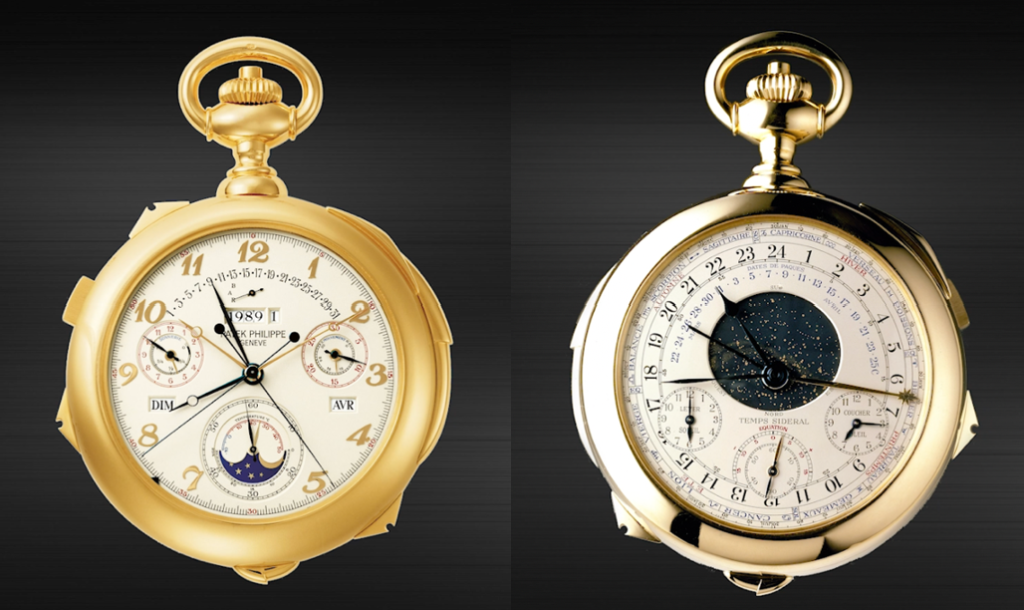
For Patek Philippe, quality control is a religious experience for watches. So rigorous is the protocol that I can think of no better comparison, other than baptism, to compare it to. And it reaches an even more extreme level for acoustic-endowed timepieces. The complexity of this mechanism is so intricate that the slightest variable can distort sound quality – even the case material. Rose gold is the preferred metal as it offers the purest sound, while platinum and its dense properties dampen sound quality. No two models of the same metal and diameter size will ever sound exactly the same – each is entirely unique.
Ultimately, the decision of whether the unique sound of a new minute repeater will reach the customer depends upon the analysis of the President’s ear alone. At the time of the Caliber 89, it was Mssr Philippe Stern’s ear – this responsibility now lies with Mssr Thierry Stern.
It’s interesting learning this process from the watchmaker’s perspective.
Final tweaks are precisely made at the workbench before the watchmaker personally carries their repeater to its final test. Along the way, their minds flash over the 300 hours they’ve dedicated to bringing this to life. Now, the watch is in the hands of Mssr Stern.
He turns the watch over in his hands, scrutinizing every angle of the case, every detail of the dial, finally demanding the tiny hammers to strike the time by actioning the slider… ding, ding, ding, ding, ding, ding-dong, ding-dong, ding-dong…

As the watch rings out, he’s quietly measuring three core criteria – the harmony of the chime, the balance of the chime across minutes and hours and, finally, the length and depth of the chime. The watchmaker studies his reaction and awaits his final verdict – hoping for that smile of approval. Otherwise, it’s back to the workshop to address areas of underperformance, which will likely push the total working hours over 500.
It is a tense and nerve-wracking moment for the watchmaker, but one I believe is quite charming for anyone that is a fan of this level of personal touch. For the craftsmen to receive a smile of approval from Mssr Stern is an extremely proud moment for them.
Thanks to the ‘Quality & Homologation’ department, each repeater has undergone proper testing in a soundproof chamber even before meeting the ear of Mssr Stern. It’s here they are recorded and analyzed against previously approved and archived chimes. Having this baseline for measurement significantly helps in achieving the perfect sound and passing the final “ear test”. Once the sound tests perform accurately, the meeting is set to officially present it to the President. So does this guarantee each one will pass? Even with this technology, it still does not guarantee to pass the final test. That’s how incredibly unique each one is.
The formula Patek Philippe currently implements in developing repeating timepieces is nearly flawless. And although it yields truly dazzling results, this manufacturer will never rest on its pursuit of perfect harmonic sound quality. And to achieve this, Mssr Stern is always sculpting them further to deliver greater acoustic resonance. This is more easily achieved off of the wrist, of course. But how does it sound on the wrist? How do you generate a robust enough sound to carry while being worn? And this is the challenge that Mssr Stern remains in pursuit of – achieving even greater richness, purity, and sound amplification. I am sure he will remain on task.
Throughout their existence, minute repeaters have been rare in relation to other complications and time-only watches. They have always come at a handsome price too. For Patek Philippe, they even come with an application process to ensure they are reserved for the collector who can fully appreciate them.
Considering so few watchmakers possess the God-given ability to craft repeaters of this caliber, along with sound quality testing, and finally, the approval of Mssr Stern – this is a level of watchmaking that must remain safeguarded. Therefore, the application is justified and essential.
The 150th Anniversary undoubtedly recaptured the hearts of customers around the world – officially rekindling a love affair for the Minute Repeater and an appetite for regular production once again. And in 1992, it was Ref 3939 that had its debut as the first non-limited-edition minute repeater. Don’t expect to find this one at auction, though, as these tend to remain with their owners and are cherished as family heirlooms. I’m grateful to have had the chance to see and hear this up close. It’s the rock star that brought back acoustic time telling, and I’ll always remember its history when I hear one ring out. Thanks to the Stern’s, future generations will have the opportunity to purchase and cherish their own chiming timepieces for many years to come.
